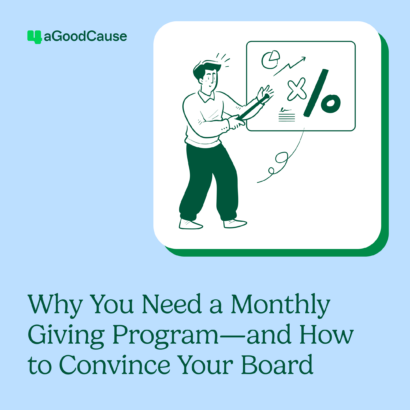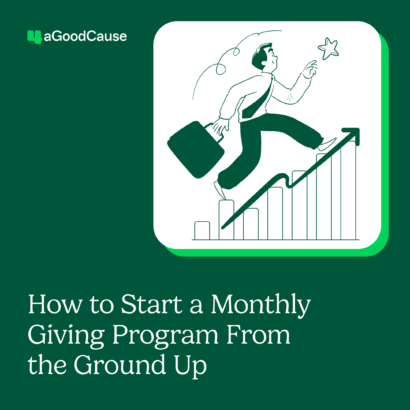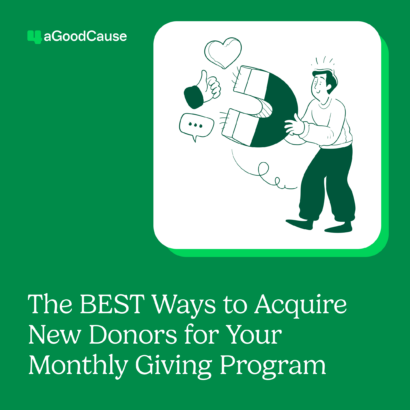Thinking about hosting a fundraising event? In talking with some of our clients, we’ve learned that some of them struggle with coming out on top after the events are over. Rather than just break even on your next event, here are five tips for managing successful fundraising events that bring in money. Work through them diligently and you’ll have a successful event on your hands!
Set your plan
First, should you host the event? Does one large fundraising event make sense, or would smaller events yield better return for your organization? What types of resources do you have available (from location to staffing to current funds) for the event?
When planning a nonprofit event, it’s important to understand how it may impact your overall fundraising plan. For instance, if you have a golf tournament in the spring, a gala in the fall and a winter carnival (not to mention your annual campaign) what are the key deliverables and timelines between all of these throughout the year?
Another way to approach your plan is to think about how your fundraising event will entice donors to be a part of your mission. Clearly define your goals of the event from the types of attendees you are looking for, what (if any) sponsors should/could be involved and, ultimately, what will success look like? Number of donors? Total dollars raised?
Pro tip: As you are setting your goals, tie them into how dollars raised will make a positive impact on those that are affected by your organization. Create a landing page or microsite that outlines these impact statements and shows your goal visually (i.e. using a fundraising thermometer) and the progress made so far.
Establish a budget
When planning event budgets, a helpful approach is to look at your break-even scenario, your worst-case scenario and your sell-out scenario.
Pro tip: Use a spreadsheet with separate tabs outlining each budget scenario. Even better? Keep all three budgets together on one sheet so that you can compare columns against one another. You can input actuals as you move toward your event date in order to gauge how much additional outreach may or may not be needed in order to hit your goal numbers.
Maximize your revenue streams
As you are preparing your budget, think through the various revenue streams that can come in through your fundraiser. Golf tournaments, for instance, can have title sponsors, hole sponsors, 4-some registrations, mulligan purchases, closest to the pin/hole contests, silent auctions, a general donation “ask” during dinner, etc.
As a starting point, no matter the nonprofit event type, consider the following as additional revenue streams:
- Sponsorship packages. Offer various levels (and think through the “gets” for each level) and be sure to allow for online sponsorship registrations.
- Ticket sales. Consider offering special discounts or early bird pricing or selling VIP packages with meet-and-greet options and early entry for larger events. You can also provide discount codes for special groups such as veterans, teachers or members of the military. Use online registrations and encourage attendees to share that they’ve registered for your event on social media.
- Raffles and auctions. Whether you set up traditional raffle tickets or provide a 50/50 raffles where the organization receives 50% of the proceeds (and the raffle winner receives the other half), this is another way to build revenue for your cause during your event. Silent or live auctions also work for getting people involved and raising more dollars.
- Calls to action during your event. Set up a special SMS (text-to-donate) program during the event. Another idea: Set donation envelopes on every chair and have a guest speaker present a small ask request.
- Crowdfunding. Encourage invitees to get into teams as a friendly fundraising competition. Provide incentives and prizes at the event to recognize those that raised the most. Give options for those that are unable to attend but want to be a part of the activities and area to make a donation online in lieu of attending.
Create buzz
A common piece of feedback from would-be attendees is that they didn’t hear about the event until it was too late. While your team is working hard internally to make your event a success, you have to remember to get it out there in different ways—consistently—many weeks leading up to the event. For larger events, those communication tactics should start anywhere from 9 to 12 months ahead of the event date.
Pro tip: Establish a hashtag for your event and encourage your attendees to use it as they register, leading up to and during the event. Create copy/paste social media content that can be found on your event landing page, microsite or that you put out in email communications, and encourage attendees, sponsors and staff to use the content on their personal digital channels.
Mind your Ps and Qs
Never underestimate the power of a thank you. From small take-home gifts for all of your fundraiser attendees to personalized emails or handwritten cards, there are many ways to show your donors and event attendees that you care. After your event wraps, do not forget the thank yous! If you use email marketing for this, you can also couple it with a final ask or a way to showcase the impact they made for gifts that came in.
Pro tip: Keep in mind how thank you gifts or messages may come across. Even if they were donated or didn’t cost much, if they appear to have a large price tag associated with them, your donors may feel put off by receiving such lavish thank you gestures when they’re providing funding to your cause. Be mindful of your audience and their expectations.
Additional budget-saving tips
While there are many pieces that go into a fundraising event, some of them can be bartered for, bargained or donated as in-kind services and gifts. Before spending full-price for your event needs, consider asking for donations (or sponsors) to cover:
- Food and beverage. Considering using a local bakery or caterer for your event and offer to promote their business through logo placement and social media call-outs leading up to the event for a discounted price. Serving alcohol? Liquor licenses can be expensive, but many times you can partner with a local Lions Club or similar organization to use their license, so you don’t have to pay the fees for your own.
- Gifts and swag. If you’re looking for notebooks, pens, stress balls, water bottles or other fun thank-you gifts or event swag, consider having those items as a “get” for a larger sponsorship. Your sponsor covers the cost of those items and, in turn, receives their logo on the items in conjunction with yours.
- Flowers and centerpieces. Similar to the food and beverage vendors, look for local florists or maybe someone just starting out in this area that is looking to get the word out about his or her business. Each centerpiece can have information about the vendor that provided the flowers including contact info, etc. This is another sponsorship package opportunity as well.
- Printing costs. Do you work with a print vendor for other things your organization needs throughout the year? Print prices can add up for events—banners, programs, signage, etc. Consider asking your print vendor if he/she would be willing to print pro bono (or at a significant discount) and, in turn, you can allow them to put their logo on each printed piece as the print sponsor for the event.
- Venue. While you may not be able to get venue rentals for free, do shop around. Some locations will offer nonprofit discounts. Some will give you the space for free if you spend a minimum on food and beverage. And some would also be willing to be listed as a key sponsor of the event in order to knock off a few hundred dollars in your rental fees. It never hurts to ask.
At the end of the day, think through the cost (time and money) for putting on your event and your goal for dollars raised. Even the best events need to have an adequate ROI to be deemed successful. Fundraising events are always a lot of fun (and always a lot of work!) be prepared by using the above tips to set you up for success.



